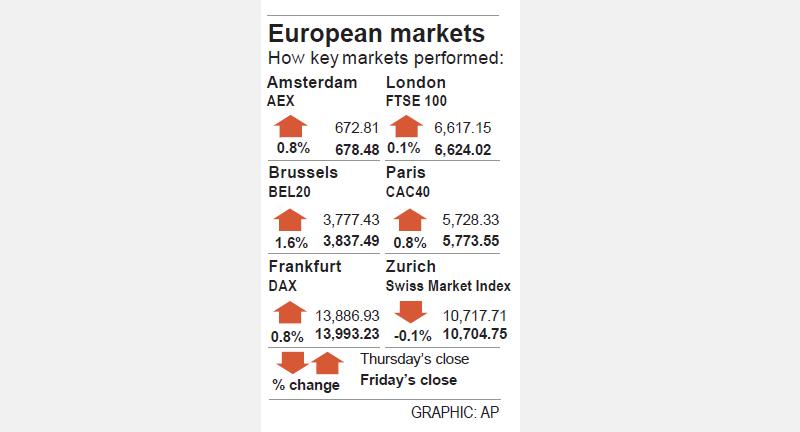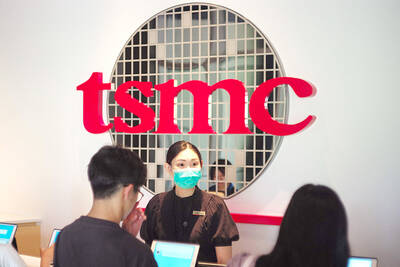Euro zone shares rose on Friday, marking a third week of gains, as data showed factory activity this month jumped to a three-year high, while upbeat quarterly earnings boosted confidence in a broader economic recovery.
The pan-European STOXX 600 index rose 0.53 percent to 414.88, as regional factory activityreached a three-year high on strong demand for manufactured goods at home and overseas.
Another reading showed that the euro zone’s current account surplus widened in December last year on an increase in trade surplus and a narrower deficit in secondary income.

Still, the STOXX 600 marked a small gain of 0.21 percent for the week, having dropped for the past three sessions as investor concern grew over rising inflation and a rocky COVID-19 vaccine rollout.
However, basic resources stocks outpaced their peers this week with a 7 percent jump, as improving industrial activity across the globe drove up commodity prices.
“This week’s slightly adverse price action has all the hallmarks of a loss of momentum temporarily and not a structural turn,” OANDA senior market analyst Jeffrey Halley said.
“There is not a major central bank in the world thinking about taking their foot off the monetary spigot, except perhaps China. [Markets] will remain awash in zero percent central bank money through all of 2021 [and] a lot of that will head to the equity market,” Halley said.
Minutes of the European Central Bank’s meeting last month, which were released on Thursday, showed that policymakers expressed fresh concerns over the euro’s strength, but appeared relaxed over the recent rise in government bond yields.
The bank’s relaxed stance was justified by the eurozone economy requiring continued monetary and fiscal support, as evidenced by a contraction in the bloc’s dominant services industry this month.
The STOXX 600 has rebounded more than 50 percent since crashing to multiyear lows in March last year.
Hopes of a global economic rebound this year are also sparking demand for sectors such as energy, mining, banks and industrial goods.
London’s FTSE 100 on Friday lagged regional bourses due to a slump in January retail sales and as the pound jumped to its highest against the US dollar in nearly three years.
It rose 0.1 percent to 6,624.02, gaining 0.52 percent for the week.
French automaker Renault SA tumbled more than 4 percent after posting a record annual loss of 8 billion euros (US$9.69 billion), while food group Danone SA and German insurer Allianz SE rose following upbeat trading forecasts.

Taiwan Transport and Storage Corp (TTS, 台灣通運倉儲) yesterday unveiled its first electric tractor unit — manufactured by Volvo Trucks — in a ceremony in Taipei, and said the unit would soon be used to transport cement produced by Taiwan Cement Corp (TCC, 台灣水泥). Both TTS and TCC belong to TCC International Holdings Ltd (台泥國際集團). With the electric tractor unit, the Taipei-based cement firm would become the first in Taiwan to use electric vehicles to transport construction materials. TTS chairman Koo Kung-yi (辜公怡), Volvo Trucks vice president of sales and marketing Johan Selven, TCC president Roman Cheng (程耀輝) and Taikoo Motors Group

Among the rows of vibrators, rubber torsos and leather harnesses at a Chinese sex toys exhibition in Shanghai this weekend, the beginnings of an artificial intelligence (AI)-driven shift in the industry quietly pulsed. China manufactures about 70 percent of the world’s sex toys, most of it the “hardware” on display at the fair — whether that be technicolor tentacled dildos or hyper-realistic personalized silicone dolls. Yet smart toys have been rising in popularity for some time. Many major European and US brands already offer tech-enhanced products that can enable long-distance love, monitor well-being and even bring people one step closer to

New apartments in Taiwan’s major cities are getting smaller, while old apartments are increasingly occupied by older people, many of whom live alone, government data showed. The phenomenon has to do with sharpening unaffordable property prices and an aging population, property brokers said. Apartments with one bedroom that are two years old or older have gained a noticeable presence in the nation’s six special municipalities as well as Hsinchu county and city in the past five years, Evertrust Rehouse Co (永慶房產集團) found, citing data from the government’s real-price transaction platform. In Taipei, apartments with one bedroom accounted for 19 percent of deals last

RECORD-BREAKING: TSMC’s net profit last quarter beat market expectations by expanding 8.9% and it was the best first-quarter profit in the chipmaker’s history Taiwan Semiconductor Manufacturing Co (TSMC, 台積電), which counts Nvidia Corp as a key customer, yesterday said that artificial intelligence (AI) server chip revenue is set to more than double this year from last year amid rising demand. The chipmaker expects the growth momentum to continue in the next five years with an annual compound growth rate of 50 percent, TSMC chief executive officer C.C. Wei (魏哲家) told investors yesterday. By 2028, AI chips’ contribution to revenue would climb to about 20 percent from a percentage in the low teens, Wei said. “Almost all the AI innovators are working with TSMC to address the